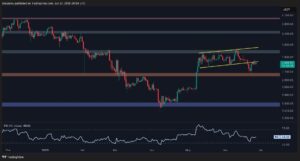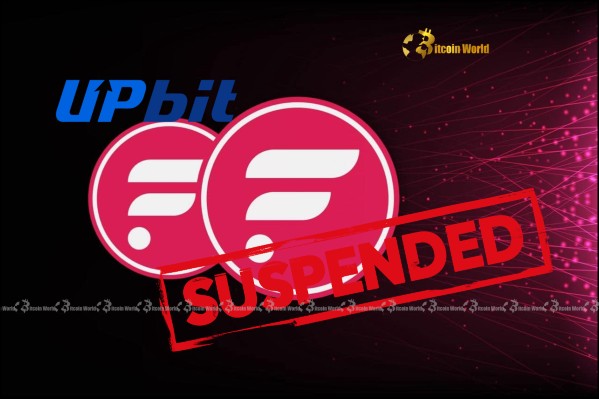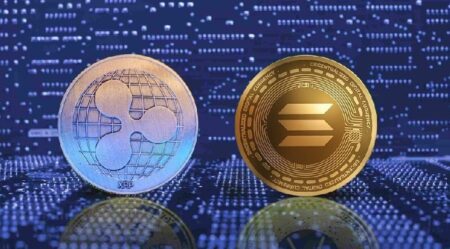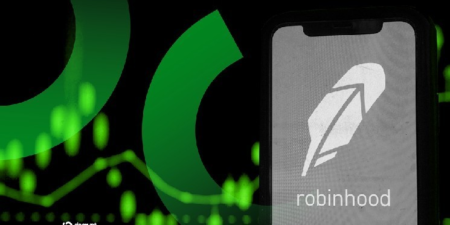In a recent development that has caught the attention of the crypto community, South Korean crypto exchange Upbit has issued an urgent announcement. The exchange has temporarily suspended all deposits and withdrawals of the FLR token. This crucial decision stems from a significant technical issue: a halt in block production on the underlying Flare network. For anyone holding or trading FLR, understanding the implications of this Upbit FLR suspension is paramount.
Why the Upbit FLR Suspension Matters
When a major crypto exchange like Upbit announces a suspension of services for a particular asset, it sends ripples through the market. Upbit, being one of the largest exchanges in South Korea, plays a vital role in the global crypto ecosystem. Their official statement highlighted that the immediate cause for the suspension was an issue directly related to the Flare network itself. Specifically, the network experienced a complete halt in its block production, which is akin to a blockchain’s heartbeat stopping. Without new blocks being produced, transactions cannot be processed, making any deposit or withdrawal activity impossible and unsafe for users.
This proactive measure by Upbit is standard protocol to protect user funds and prevent potential issues during network instability. While inconvenient, such suspensions are often necessary to maintain the integrity of transactions and ensure the security of assets on the platform.
Understanding the Critical Flare Network Halt
So, what exactly does a ‘halt in block production’ mean for a blockchain network like Flare? Imagine a train track where trains (transactions) move from station to station (blocks). If the track construction suddenly stops, no new trains can move forward. In blockchain terms, a halt means that the network is no longer able to validate and add new transactions to the ledger. This can happen for various reasons, including:
- Consensus mechanism issues: Problems with how network participants agree on the next block.
- Software bugs: Unforeseen errors in the network’s code.
- Network congestion: Although less common for a full halt, extreme congestion can lead to processing failures.
- Security incidents: While not confirmed in this case, attacks can sometimes disrupt block production.
The Flare network halt directly impacts the usability of the FLR token, as its movement relies entirely on the underlying network’s functionality. Until the Flare team resolves the issue and block production resumes, the token remains in a state of operational limbo.
What This Means for FLR Token Holders
For individuals holding the FLR token on Upbit, the immediate consequence is the inability to move their assets. This means you cannot deposit more FLR into your Upbit account or withdraw existing FLR to an external wallet or another exchange. It’s important to note that your funds are typically safe during such suspensions, as the exchange is preventing transactions, not accessing your holdings.
Key considerations for FLR token holders:
- Patience is key: Network issues are usually temporary, and development teams work diligently to resolve them.
- Stay informed: Monitor official announcements from Upbit and the Flare Network’s official channels (website, Twitter, Discord) for updates on the resolution.
- Consider your strategy: While you cannot move FLR on Upbit, if you hold FLR on other exchanges or in self-custody wallets, their functionality might vary depending on their integration with Flare and the network’s overall status.
Navigating Crypto Deposit Withdrawal Challenges
The situation with Upbit and FLR highlights a broader challenge within the cryptocurrency space: the occasional necessity for exchanges to implement crypto deposit withdrawal suspensions. These measures are not unique to Upbit or Flare and can occur across any blockchain or exchange due to a variety of factors, including:
- Network upgrades: Scheduled maintenance or hard forks.
- Security audits: Temporary halts for routine security checks.
- Regulatory compliance: Adjustments to meet new legal requirements.
- High network fees/congestion: To prevent users from incurring excessive costs for failed transactions.
While frustrating for users, these actions are often taken to safeguard assets and ensure a smooth, secure trading environment once the underlying issue is resolved. It underscores the importance of understanding the operational nuances of both the tokens you hold and the exchanges you use.
The Role of Upbit Crypto Exchange in Crisis Management
As a leading Upbit crypto exchange, its response to such incidents is crucial for maintaining user trust and market stability. Upbit’s swift announcement demonstrates transparency and a commitment to keeping its users informed. In such situations, the exchange’s primary responsibilities include:
- Immediate communication: Notifying users promptly about the suspension and its reasons.
- Monitoring and coordination: Working closely with the Flare network’s development team to get real-time updates on the issue’s resolution.
- Ensuring asset safety: Protecting user funds during the downtime.
- Resumption of services: Reinstating deposit and withdrawal functionality as soon as the network stabilizes and it’s safe to do so.
Users should always rely on official announcements from Upbit’s website or their verified social media channels for the most accurate and timely information regarding the resumption of FLR services.
Conclusion: Staying Informed in a Dynamic Crypto Landscape
The temporary Upbit FLR suspension due to a Flare network halt serves as a potent reminder of the dynamic and sometimes unpredictable nature of the cryptocurrency market. While such incidents can cause concern, they are often temporary operational hurdles that blockchain networks and exchanges navigate. For FLR token holders and users of the Upbit crypto exchange, the best course of action is to remain calm, verify information from official sources, and patiently await updates. The ability to perform a seamless crypto deposit withdrawal is fundamental to the user experience, and exchanges like Upbit are typically quick to restore these services once network stability is assured.
To learn more about the latest crypto market trends, explore our article on key developments shaping cryptocurrency price action.
Disclaimer: The information provided is not trading advice, Bitcoinworld.co.in holds no liability for any investments made based on the information provided on this page. We strongly recommend independent research and/or consultation with a qualified professional before making any investment decisions.
Read the full article here









